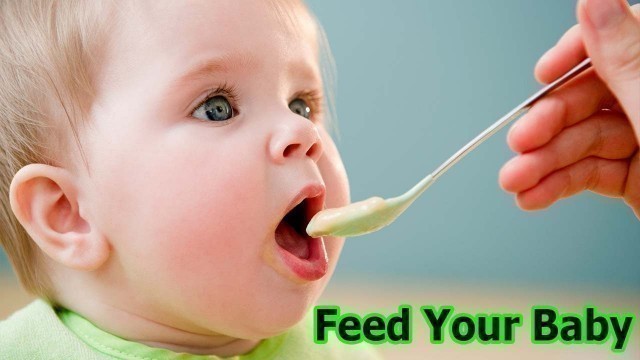

02:14
Apr 5, 2021
4
3
'Baby feeding is one of the most important things for a baby\'s health and growth. You should always very careful that what type of food you are feeding your baby. Babies are very curious to eat something new. Whether you’re a first-time parent or a seasoned caregiver, figuring out why your baby is crying can feel like a guessing game. Fortunately, paying attention to your baby’s daily feeding schedule can help reduce some of the guesswork. By following a feeding schedule, you might be able to avoid some of the fussiness associated with hunger, and you’ll be able to more easily tell whether he’s more likely to be wet or tired instead. Whether your little one’s a newborn, a 6-month old, or even a 1-year-old, read on to find out how to come up with a feeding schedule and adjust it to your baby’s needs as he grows and develops. 6-Month-Old Feeding Schedule: At this stage, your baby’s healthcare provider may recommend you expand your baby’s diet to include solid foods. With these menu additions on the horizon, having a 6-month-old feeding schedule will come in handy! When a baby ready to try solid foods, a single-grain baby cereal mixed with breast milk or formula has traditionally been the first solid food to be introduced, followed by pureed vegetables and fruits. However, there\'s no medical evidence that indicates introducing foods in any special order offers any benefits. Keep in mind that solids are only a supplement at this stage, and that breast milk or formula is still your baby’s most important source of nutrition. Continue to include about 32 ounces of breast milk or formula in your 6-month-old’s feeding schedule of three to five feedings per day to ensure your baby gets the necessary vitamins and minerals. You may be able to start weaning your baby off of night feedings; however, every baby is unique. Speak to your baby’s healthcare provider to see if it’s time to cut down on nighttime feedings and to learn what you can do to encourage the process. 7 to 9-Month-Old Feeding Schedule: Months seven through nine can be a good time to add a greater variety and quantity of solid foods to your baby’s diet. He may need fewer daytime feedings, now — about four to five. Purees of meats, veggies, and fruits are recommended at this stage. Introduce your baby to these new flavors as single-ingredient purees then gradually add combinations to his meals. Your baby may slowly begin to wean off breast milk or formula as his growing body demands solid foods for nutrition. There is no correct time to wean off breast milk or formula. Speak to your baby’s healthcare provider to learn more about the cues and signs that can let you know when your baby is ready for more solid foods. 10 to 12-Month-Old Feeding Schedule: Exploring new textures may now be a big part of your little one’s meals. As he grows, he may begin to self-feed with finger foods such as cut-up bananas, dry cereal, and pasta and even demand certain flavors that he enjoys more. As you continue to replace breast milk or formula with solids, your baby’s healthcare provider can help determine how to balance out your baby’s meals. Blends of different foods can be introduced during mealtime and added to your baby’s feeding schedule. Your baby may eat about three to four times per day. Be sure to avoid offering foods that pose choking hazards such as grapes, peanuts, and popcorn. Finger feeding can be fun for your little one. Always be sure that his food is cut up into pieces that are small enough for him to be able to pick up and chew without being at risk of choking. After some practice, he’ll be on his way toward wholesome, independent eating habits. 1-Year-Old Feeding Schedule: Now that you’re celebrating your baby’s first birthday, it’s also time to celebrate his feeding accomplishments. Your baby’s feeding schedule can now include almost all the healthy and nutritious foods you eat, with a few minor exceptions such as raw honey and choking hazards like nuts. Your baby may be eating less frequently now, as he is able to take in more food in one sitting. Give your 1-year-old approximately three meals and about two or three snacks a day. This is the time to add cow’s milk to your baby’s diet. However, too much milk is not always good and should be kept to about 16 to 24 ounces per day if your baby is able to tolerate lactose. Check with your baby\'s healthcare provider if you have any questions about how and when to introduce cow\'s milk. #BabyFeeding #BabyEating #CuteBaby #BabyFoodTestReaction #FunnyBaby #BabyFunnyMoment'
Tags: funny baby , cute baby , Baby feeding , Baby Eating Moments , Baby Eating and Playing , Baby Food Test Reaction
See also:




comments